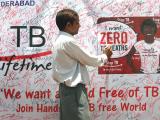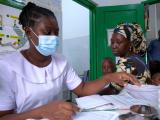Feb 8, 2011
WHO: more study is needed on H1N1 vaccine-narcolepsy link
Vaccine safety experts from the World Health Organization (WHO) said today that they agree with a Finnish task force that more investigation is needed to explore a possible link between narcolepsy and 2009 H1N1 pandemic vaccination. The statement from the WHO Global Advisory Committee on Vaccine Safety follows a Feb 4 conference-call meeting to review and discuss the preliminary findings from Finland's National Institute for Health and Welfare investigation, which found that children between ages 4 and 19 who received the Pandemrix 2009 H1N1 vaccine had a nine times greater risk of experiencing narcolepsy than those who weren't vaccinated. Pandemrix, an adjuvanted vaccine made by GlaxoSmithKline, was the only pandemic vaccine used in Finland and was used in 46 other countries. Though narcolepsy following 2009 H1N1 vaccination has been reported in at least 12 nations, the rates were higher in Finland, Sweden, and Iceland than in other countries, the WHO said. Finnish officials said the Pandemrix vaccine was probably a contributing factor and that further investigation is needed to identify other reasons, such as a genetic predisposition, for the increased narcolepsy risk. The final report from Finland's National Narcolepsy Task Force is due at the end of August. The European Centre for Disease Prevention and Control is also investigating the narcolepsy reports. The WHO's vaccine advisors said they will continue to monitor the developments closely and will provide updates as more information becomes available.
Feb 8 WHO statement
Cambodia, Bangladesh report H5N1 outbreaks
Cambodia reported its first H5N1 avian influenza outbreak of 2011 yesterday, and Bangladesh reported three new outbreaks, according to official and local media reports. The outbreak in Cambodia occurred in a village in Kandal province, located in the south central part of the country, according to a report yesterday from the World Organization for Animal Health (OIE). The virus killed 48 birds, and 174 more were culled to slow the spread of the disease. Cambodia reported its last H5N1 outbreak in October 2010. Meanwhile, Bdnews24.com, an online newspaper based in Dhaka, reported three more outbreaks in Bangladesh, one occurring in a poultry shed at border guard headquarters and two at poultry farms in Gazipur and Narayanganj districts of Dhaka division, located in the central part of the country. The outbreak at the border guard was detected after a chicken died suddenly, Bdnews24.com reported today. Culling began today on the remaining 12,000 birds. District officials in Gazipur confirmed the outbreak there yesterday, which led to the culling of 5,000 birds at a chicken farm. In Narayanganj district, the virus hit two farms that were located near each other, killing about 200 birds yesterday. The remaining 8,500 birds are being culled, according to the news report.
Feb 7 OIE report
Breastfeeding infant contracts yellow fever after mom's vaccination
A newborn whose mother received a pre-travel yellow fever vaccine likely contracted the disease from breastfeeding, according to a case report published yesterday in CMAJ (the Canadian Medical Association Journal). "Until recently, avoidance of vaccination of breastfeeding women with yellow fever vaccine had been based on theoretical grounds only," the authors write, saying there was "probable transmission" of one of the vaccine strains to the infant. The mother received vaccines against yellow fever and other diseases when the child was 10 days old and before they traveled to an urban area of Venezuela not known for yellow-fever risk. Twenty days after his return to Canada, the 5-week-old baby was hospitalized with fever and irritability. Testing of his spinal fluid by the US Centers for Disease Control and Prevention revealed evidence of recent yellow fever virus infection. He received a 21-day course of acyclovir and recovered uneventfully.
Feb 7 CMAJ abstract
Feb 7 CMAJ press release
Global health fund takes steps to address fraud
A global health fund that oversees $21.7 billion in grants to combat infectious diseases, along with the United Nations' (UN's) chief development agency, announced anti-corruption measures after the Associated Press (AP) revealed high levels of fraud in implementing the fund's grants. The Global Fund to Fight AIDS, Tuberculosis and Malaria said in a Feb 4 press release that it will create a panel of international experts to examine the fund's ability to prevent and detect fraud, among other measures. The AP reported in late January that the fund's investigators were finding that high percentages of some grants were being lost because of corruption and that the fund was demanding the return of $34 million in grant money. There are at least 100 possible cases of fraud, according to a Feb 4 AP report. Other anti-fraud measures, according to the press release, include improved monitoring by firms that oversee expenditures, added scrutiny of fraud-riddled activities like training, strengthened country-level controls, and a doubled budget for the fund's independent inspector general. Also, Helen Clark, administrator of the UN Development Program, which manages about $2.7 billion of the fund's grant money, announced stricter measures against internal fraud and backed the Global Fund's new safeguards. "When funds intended for lifesaving treatment and prevention are stolen, that theft is tantamount to murder," she said, according to the AP report.
Feb 4 Global Fund press release


















